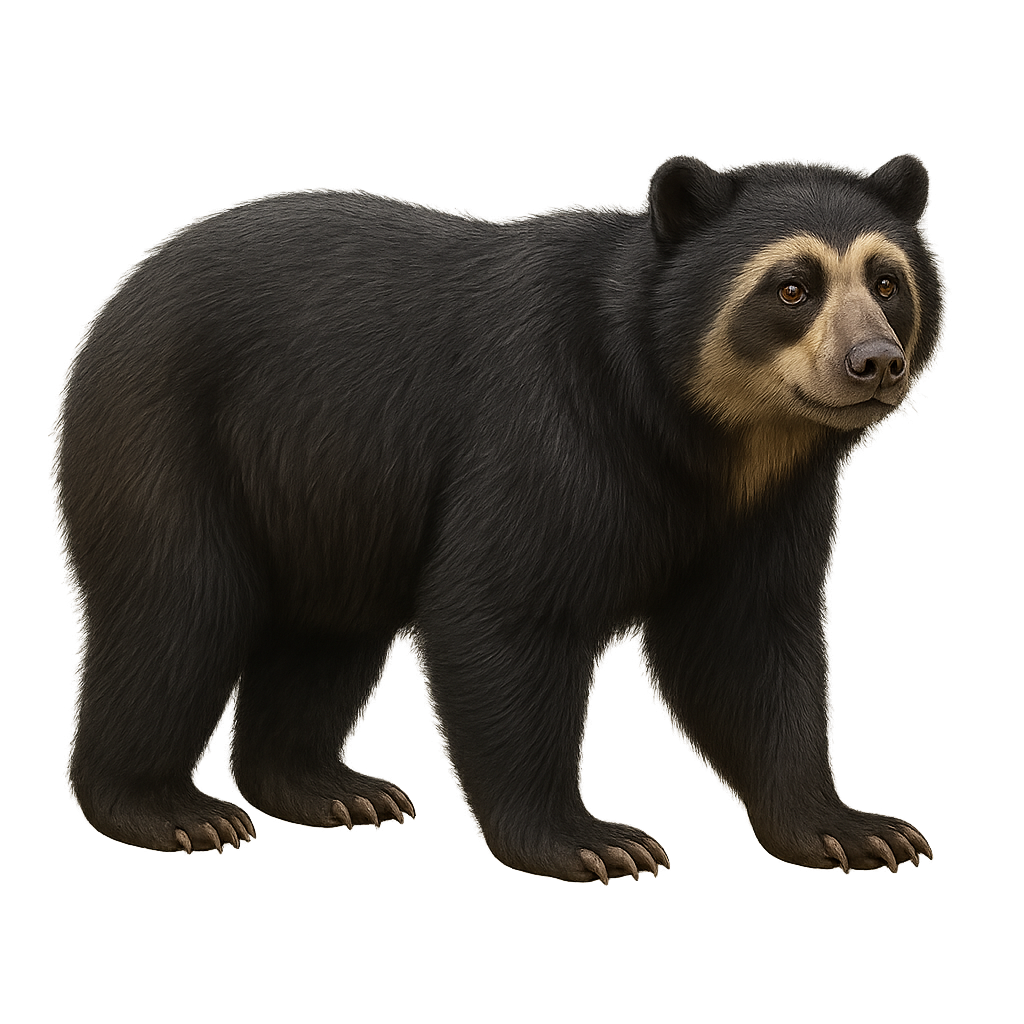Your wildlife photography guide.
Explore the andean bear in detail, study its behavior, prepare your shots.
Where to observe and photograph the andean bear in the wild
Learn where and when to spot the andean bear in the wild, how to identify the species based on distinctive features, and what natural environments it inhabits. The WildlifePhotographer app offers tailored photography tips that reflect the andean bear’s behavior, helping you capture better wildlife images. Explore the full species profile for key information including description, habitat, active periods, and approach techniques.
Andean Bear
Scientific name: Tremarctos ornatus

IUCN Status: Vulnerable
Family: URSIDAE
Group: Mammals
Sensitivity to human approach: Shy
Minimum approach distance: 60 m
Rut period: April to June
Gestation: 160-210 jours
Births: September to January
Habitat:
Humid Andean forests and páramo
Activity period :
Active intermittently throughout day and night.
Identification and description:
The Andean Bear, also known as the spectacled bear, is a large mammal found primarily in the tropical forests and mountains of South America, particularly in Colombia, Venezuela, Ecuador, and Peru. It measures about 1.5 to 2 meters in length and weighs between 100 and 200 kg. Its coat is generally black, with white or cream markings around its eyes in the shape of spectacles, hence its name. The Andean Bear is an omnivore, primarily feeding on fruits, plants, honey, and insects, but it may also eat small mammals or birds. It is an excellent climber, using its powerful claws to move through trees in search of food. Although its population remains stable in some areas, the Andean Bear is threatened by habitat loss, deforestation, and poaching.
Recommended lens:
300 mm – adjust based on distance, desired framing (portrait or habitat), and approach conditions.
Photography tips:
Approach slowly and discreetly, using a telephoto lens to avoid disturbing the spectacled bear, a generally shy animal that can move away quickly if it feels threatened.
Photograph early in the morning or late in the afternoon, when the light is soft and the bear is more active, often foraging for food, mainly fruits, plants, and insects.
Capture moments of natural behavior: The spectacled bear is an excellent climber, often observed in trees searching for food, providing a unique opportunity for dynamic photos.
Be patient and respectful: Respecting the bear's space is crucial, as it can be sensitive to disturbances, especially during the breeding season.
The spectacled bear is a vulnerable species due to habitat loss and hunting. It is essential to respect its territory and not disturb its natural behavior. Follow local conservation rules to preserve this iconic species of the Andes.
The WildlifePhotographer App is coming soon!
Be the first to explore the best nature spots, track rutting seasons, log your observations, and observe more wildlife.
Already 1 431 wildlife lovers subscribed worldwide

